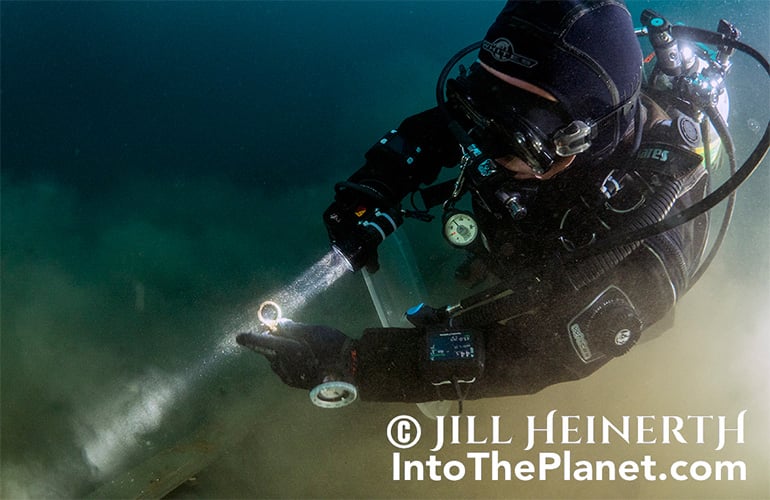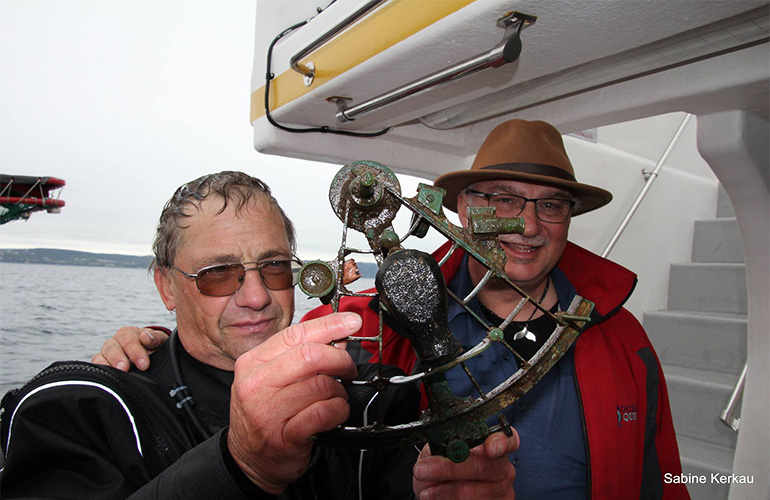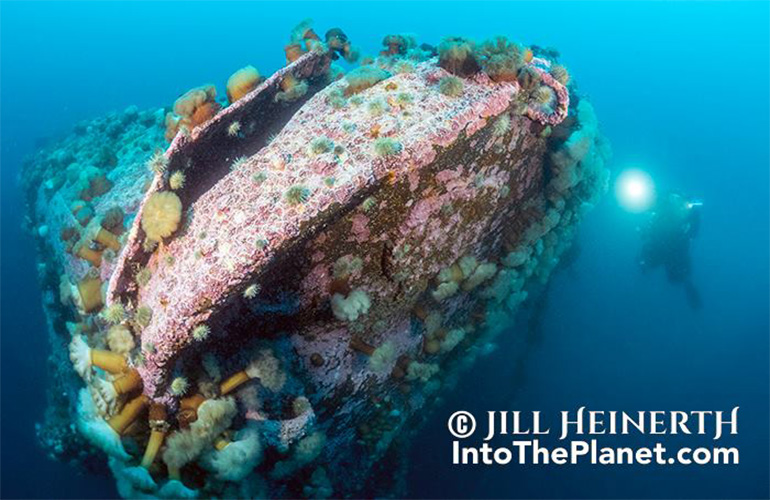Suunto ambassador and underwater explorer Jill Heinerth documented a sensitive dive mission to recover an important piece of history.
A dive team successfully retrieved the sextant from a WWII wreck and have delivered it to a Newfoundland museum for posterity.

Diver Luc Michel discovered the sextant last year.
Suunto ambassador Jill Heinerth documented the dive and says it was a “huge privilege” being part of the team.
“The fear was that if left in place, in the open, underwater, [the sextant] would disappear into somebody's private collection which is not just illegal, but also a loss of cultural history,” Jill says. “Sharing the history and ensuring the safety of this important artifact for the museum was a huge privilege.”
Meet Jill face-to-face in episode 7 of the #SuuntoAdventure video series

The recovered sextant is being restored before being displayed at Newfoundland museum.
The sextant belonged to the SS Rose Castle, a steam merchant ship, that a German U-Boat sank during WWII while it was anchored at Bell Island, off the coast of Newfoundland. Iron ore mines on Bell Island supplied Cape Breton's steel mills, which accounted for one-third of Canada's steel production. Seeking to disrupt production, the German U-Boat entered the harbor at 3am one morning in September 1942 and sank the SS Castle Rose with two torpedoes before sinking French vessel PLM 27 and escaping into the darkness. The Castle Rose took 28 crewmembers down with her, five who were Newfoundlanders.
“We dive with great reverence, understanding that this site is essentially a war grave,” Jill says. “The many men who died were never expecting to be targets of the war and within site of some of their homes.”

The SS Lord Strathcona was also sunk in 1942. Above, divers explore its wreck.
Diver Luc Michel, from St. Pierre et Miquelon of Newfoundland, located the sextant last year. After restoration, the sextant will be displayed at The Rooms, a Newfoundland cultural center and museum.